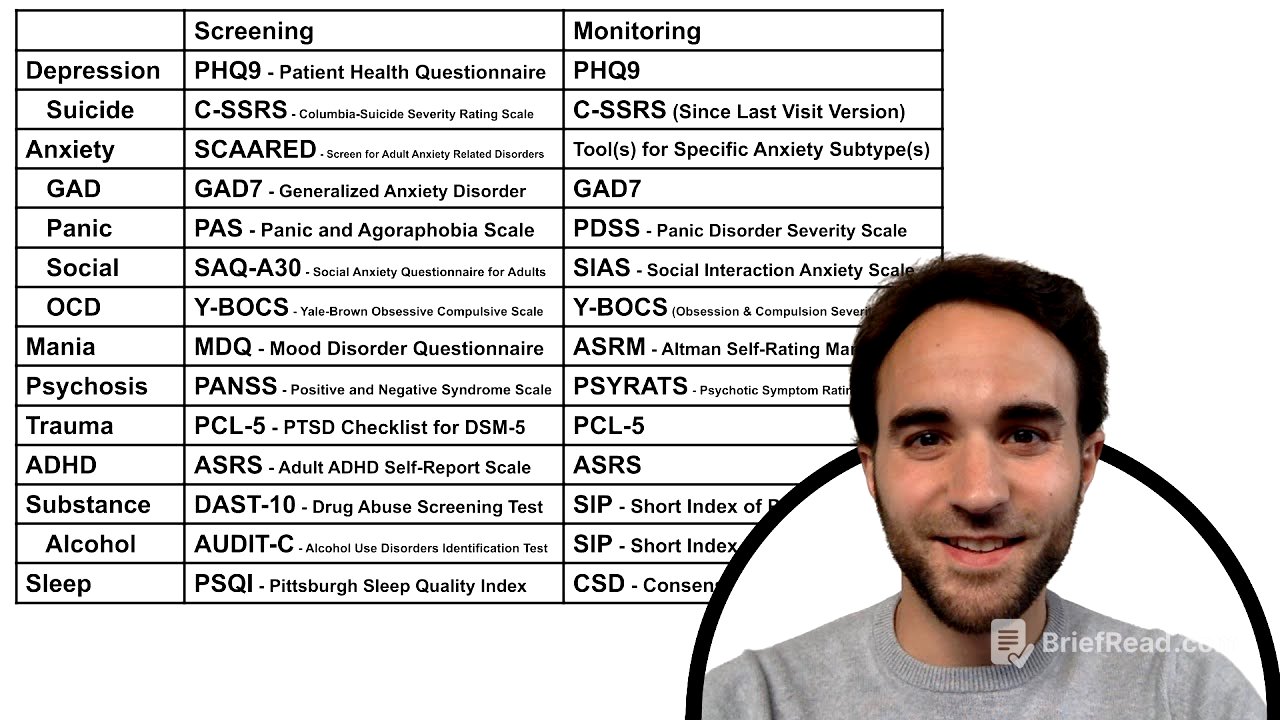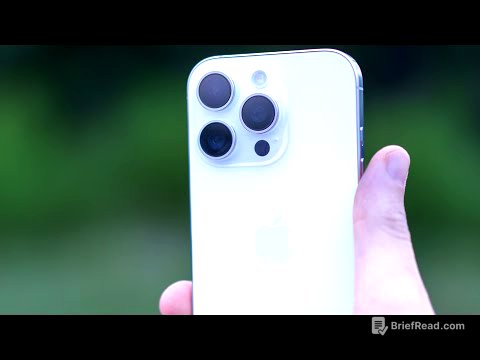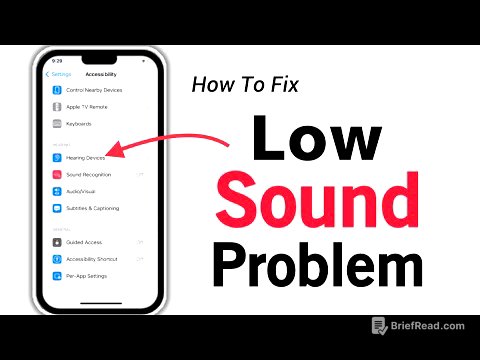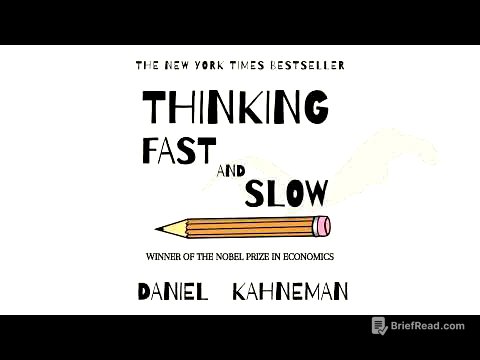TLDR;
This video provides an overview of symptom screening and monitoring tools used in psychiatry. It differentiates between screening tools for initial assessments and monitoring tools for tracking symptoms over time. The tools discussed are primarily patient self-report questionnaires, with one exception being a clinician-rated tool for psychosis.
- PHQ-9, CSSRS, SCARED, GAD-7, PAS, PDSS, SAQ-A30, SAS, Y-BOCS, MDQ, ASRM, PANSS, PYATS, PCL-5, ASRS, DAST-10, SIP, AUDIT-C, PSQI, Consensus Sleep Diary
- Screening tools are used at initial patient encounters to screen for and differentiate disorders
- Monitoring tools are used at follow-up encounters to track symptoms over time
Introduction to Symptom Screening Tools in Psychiatry [0:00]
The talk introduces a selection of symptom screening tools used in psychiatry, focusing on tools for measuring and tracking psychiatric symptoms. The tools are divided into screening tools, used during initial patient encounters to identify and differentiate disorders, and monitoring tools, used in follow-up appointments to track symptom changes over time. The presentation includes excerpts from each tool to illustrate the number of items, the time frame it measures, and sample questions. With one exception, all tools discussed are patient self-report questionnaires.
Depression and Suicidal Ideation [0:51]
For depression, the PHQ-9 is highlighted as a brief, nine-item tool suitable for both screening and monitoring major depressive symptoms like anhedonia, depressed mood, and sleep disturbances. To assess suicidal ideation, the complete Columbia-Suicide Severity Rating Scale (CSSRS) is recommended for a comprehensive review of suicidal thoughts, their intensity, and any suicidal behaviors over the patient's lifetime. The "Since Last Visit" version of the CSSRS is useful for monitoring the intensity of suicidal ideation over time.
Anxiety Disorders [1:22]
The SCARED is presented as an ideal initial screen for anxiety, covering multiple anxiety domains such as generalized anxiety, panic symptoms, and social anxiety. For generalized anxiety, the GAD-7, a brief seven-item tool, is recommended for both screening and monitoring. The Panic Disorder Severity Scale (PAS) measures the frequency and severity of panic attacks and identifies specific situations associated with these attacks, aiding in exposure therapy planning. The PDSS is a briefer tool for tracking panic attack frequency and severity over time. For social anxiety, the SAQ-A30 is a more extensive tool that assesses social anxiety across five domains, while the SAS is a briefer option for monitoring problems in social interactions.
Obsessive-Compulsive Disorder (OCD) [2:31]
The Yale-Brown Obsessive Compulsive Scale (Y-BOCS) is considered the gold standard for screening and monitoring OCD symptoms. The complete version includes a checklist of symptoms to help target exposure therapy. In follow-up sessions, focusing on the obsession and compulsion severity items provides a quicker way to monitor symptoms.
Mania and Psychosis [2:53]
The MDQ is used to screen for past manic episodes, while the ASRM monitors for early symptoms of a manic episode over the past week. For psychosis, the PANSS is mentioned as a clinician-rated tool, which is an exception to the self-report tools, because patients with psychosis often lack insight into their symptoms. For patients with insight, the PYATS can monitor the severity of positive symptoms like hallucinations and delusions over time.
Trauma, ADHD, and Substance Use Disorders [3:32]
The PCL-5 is useful for both screening and monitoring symptoms of PTSD. The ASRS can be used to screen for and monitor symptoms of ADHD. The DAST-10 serves as a general screen for any kind of drug abuse, while the SIP can monitor the consequences of problem drug use over time. For alcohol use disorder, the AUDIT-C is a brief screening tool, and the SIP can monitor the consequences of alcohol use.
Sleep Disorders and Conclusion [4:07]
The PSQI screens for sleep hygiene issues and organic sleep problems like obstructive sleep apnea. The consensus sleep diary is a standardized tool for tracking sleep behaviors daily and targeting specific areas for behavioral improvement. The presentation concludes by acknowledging the availability of many other tools but emphasizes the curated selection of well-validated and easy-to-use tools for clinical practice.









